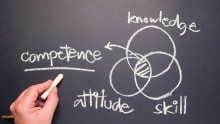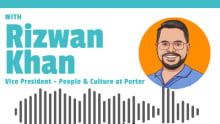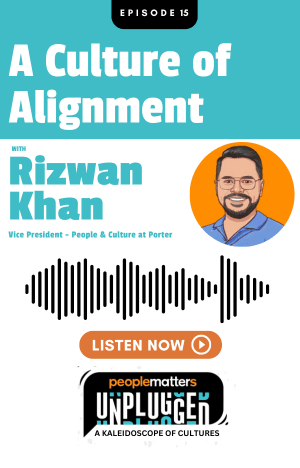I love to enable people to gather knowledge at speed and stay connected: Deel’s Shuo Wang

Shuo Wang is the co-founder and Chief Revenue Officer of Deel, the fastest-growing HR tech stack for global teams, that helps businesses hire anyone, anywhere. She is responsible for Deel’s revenue-driving functions and led the company as it scaled from $1-$100M ARR in less than 20 months. Founded in 2019, Deel’s technology offers payroll, HR, compliance, and benefits needed to hire and manage a global team. In just under three years, the company has grown to 1,400+ employees worldwide in 80+ different countries and has 10,000-plus customers, including Dropbox, Shopify, and Cloudflare.
Prior to Deel, Shuo was a co-founder and Chief Technology Officer of Aeris Cleantec, acquired by iRobot. She holds a BS degree in Robotics from the Massachusetts Institute of Technology, where she met Deel's Co-founder and CEO, Alex Bouaziz. Shuo is passionate about inspiring more women to get involved in software development, product management, and marketing.
In an exclusive conversation with People Matters, Shuo shares the journey of starting Deel, finding solutions to accelerate global hiring, the critical value in developing female talent, the opportunities that get unlocked in a hyper-connected business landscape and more.
Here are some excerpts.
Having co-founded a brilliant digital platform to support global hiring, could you share with us the story of how you brought Deel to fruition alongside Alex Bouaziz? What was your inspiration, and what is the vision?
Deel is my second startup. After I graduated from MIT, where I met Alex, some friends and I started my first startup in China. There I worked with a lot of international talent. I realised that, "Hey, if we are open to hiring internationally, there is a huge talent pool!” So we had manufacturing professionals in Switzerland or China, designers in France and software engineers in America and Europe. To manage such a diverse and globally distributed international team was exciting. However, making payments and dealing with local labour laws was very complicated.
When I exited my first company, I was already thinking of my next journey, and I always wanted to build a fintech platform. I was watching trends to see what would be the next big trend in fintech. I had friends in San Francisco who were working at LinkedIn and at that time LinkedIn let employees work from home three days a week. Slack was also becoming very popular. I observed that even when people sit next to each other, they were still communicating over Slack; they were using online collaborative tools to work.
At that time, I thought that if companies in Silicon Valley could support the work from the home movement, more and more companies would support work from home or work from outside the state. If they support working out of state, they should support people working internationally or working from anywhere. And then, companies could hire internationally. I thought that this could be the trend of the future. If this is the future, then what are the problems associated with it that I can solve?
Number one would be cross-border payments. Number two, compliance. How do I make sure that hired international talent is compliant? How do I make sure that labour laws are followed?
So Alex and I got together, discussed it, and developed a product. In the first four weeks everyone loved the idea, but they didn't like our product at all. Our advisers hated our initial product because it was very complicated to use. But we learnt that the idea made sense. So we spent a lot of time on design and functionality with our Y combinator batchmates - other companies, and other founders in the same group and tried to understand how to improve it so that we could build a product to hire internationally. That's how we came up with the prototype of Deel. After graduating from MIT, we launched our first product. Then the pandemic started, along with the work-from-home movement, and here we are today.
As the world gets even more interconnected in the post-pandemic business landscape, what are some roadblocks that continue to be present in global hiring? How is Deel addressing these challenges with fresh eyes?
Today we are a 1,400-people company across 82 different countries. And we are using our product to hire people. So when it comes to challenges, there are a couple. Firstly, you must always ensure that employees receive their salary on time. The second is compliance. How do we ensure that the hired employees can manage their local income taxes or local compliance? How can we issue all the necessary paperwork? How can we help them register with local governments? How can we develop environmental agreements that comply with local labour laws? And also, how can we provide them with the benefits they need to support their family and be in their own country in their region? So we need to build a product to automate entire processes – from payments and registration to compliance checks for local benefits.
Deel is solving that, not only for ourselves but our clients. Today we have almost 10,000 clients on Deel, from SMB to mid-market to enterprise. In addition, we are supporting over 100,000 international talents, so we can see the changes in how people or companies or leaders are internationally and how the movement of work from home to work wherever is expanding.
Being one of the leading women entrepreneurs in the world of tech and having worked intensively on bridging the gender gap in tech, could you share with us some of those initiatives you led? Also, what would be your take on how organisations today can bridge this gap?
I went to MIT for my studies, and MIT has been doing a really good job of maintaining a good male-female ratio - it is around 48% versus 52%. So, it's very balanced. And then, once I started my first company, we had a lot of female employees. So, I guess as a female founder myself; I've had to pay attention to balance the ratio well. Now when you look at Deel’s leadership team, 40% are females. So we're way ahead of that standard.
So I think, number one, we need to focus on developing female talents – truly invest in them and give them the opportunity. I don't think there is a need to have special treatment or anything; you just need to provide equal opportunities. That's it. I think with Deel, I aim to provide equal opportunities across gender and geographies. So we want to improve the working environment for everyone and give opportunities to all the promising talents out there.
Having worked in technology for over a decade, what are some of the key digital trends that will shape the world of work in the coming days? How can organisations capitalise on digital transformation today for successful business outcomes?
We, as a society, are constantly advancing, and technology is changing. For example, thirty ago is probably when web 1.0 was pure internet, right? And today, data is everywhere.
I love to enable people to gather information instantly and keep them connected with the outside world. And keep on top of things happening, not only around them but also internationally and have ready access to more knowledge. All of that comes from the advancement of technology which ensures that people are not limited to working in one place and can have meetings efficiently wherever they want. That setup saves travel time and costs on renting office spaces and empowers more streamlined communications. So I do think that digital transformation has helped companies grow.
But this is only the beginning; many CEOs and HR leaders also recognise that they can build companies quickly when they move out of the confines of office spaces and hire internationally. There is vast potential and opportunities ahead of us as flexible working becomes a lifestyle. However, this movement will not replace office space 100% but instead, emphasise how talent can be distributed and still deliver high-quality work.
Given that we spoke about the intersection of global hiring and technology, what are some final words of advice you would like to share with our community on leading digitally driven hiring practices? What is the one thing they should start doing and one thing they should stop?
One thing to start immediately is to say, "Hey, I'm open to hiring talent remotely; I'm open to hiring talents internationally; I understand that great talents are all over the place, and they don't need to be in only, say, Sydney!” So they should open their mindset and get started on that.
For those that are looking to hire internationally or relocate overseas but don’t know where to start. We recently published our global hiring toolkit broken down into salary insights, employment comparison (which compares hiring in one country vs another) employee cost calculator (cost of hiring in one country vs another) and net pay figures.
We’ve also just released our H1 Global Hiring Report with some essential information and key statistics on Global Hiring, how it is growing and what are the most popular countries to hire from and into. HR leaders can look at it to understand what other companies are doing.
And the thing to stop doing is – Don't be biased! Don't think, “I can only hire software engineers in a specific location; I can hire marketing managers in specific locations.” The location shouldn’t stand in the way of people getting a job anywhere in the world, as great talent is everywhere. Keep an open mind and dive onto this movement. The world has only just scratched the surface when it comes to unlocking a global talent pool.














